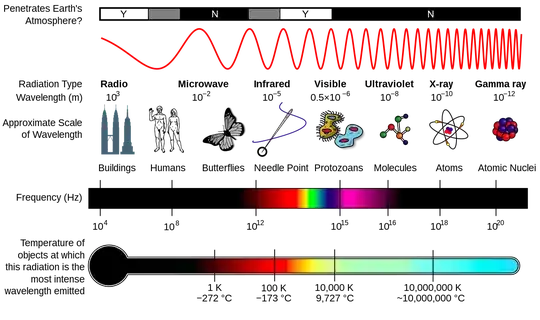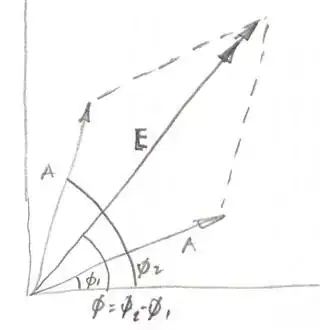I've been told that the Irradience = time average of the electric field squared. However, I've also been told that it's equal to the total Amplitude of the electric field squared. I'm kinda confused as to which interpretation it is.
There are 2 calculations for the irradience which have given me 2 different values.
The first is done via an algebraic method:
$$E_\text{tot} = A\cos(\omega t + \phi_1) + A\cos(\omega t + \phi_2)$$ $$=2A\cos(\frac{\phi_1 - \phi_2}{2})\cos(\omega t + \frac{\phi_1 + \phi_2}{2})$$ $$= 2A \cos(k\frac{r_2-r_1}{2})\cos(\omega t - k\frac{r_1 + r_2}{2})$$ If we were to take the time average of the electric field squared in this case, we would end up with Irradience being equal to: $$=\frac{1}{2}A^2\cos^2([k\{r_1 - r_2\}]/2)$$
This is clearly not just the total Amplitude squared.
However, if we were to now preform these calculations via complex notation:
$$E_\text{tot} = A_1e^{i(\omega t + \phi_1)} + A_2e^{i(\omega t + \phi_2)} = (A_1e^{i\phi_1} + A_1e^{i\phi_1})e^{i\omega t}$$
Now, if we were to find the irradience, it would end up being equal to the total amplitude squared.
Why is this the case?

